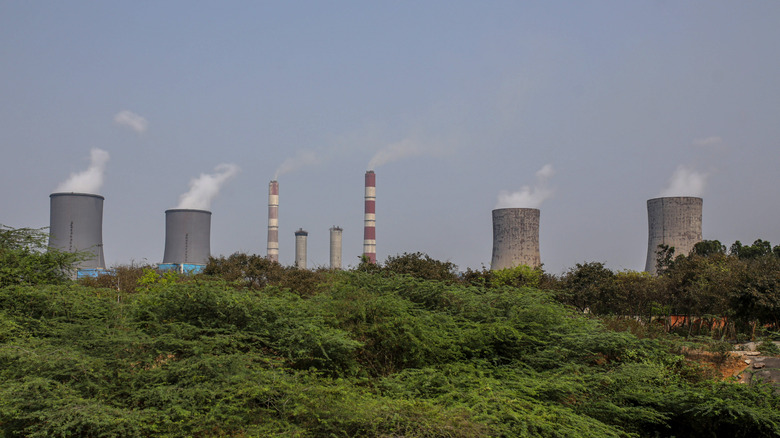What The Extreme Heat Waves In India Could Really Mean
Even though the effects of climate change have global implications, some regions are particularly vulnerable to its effects. Take India's case — a nation with significant parts of it lying at the cusp of the torrid zone. The country is known for its hot, sultry summers, with temperatures regularly breaching the 104 degrees (40 Celsius) mark during the summer months of March, April, and May. Needless to say, people living in this part of the world are used to such high temperatures and often make contingency plans to escape the heat way before the heatwave arrives. 2022, however, has been different.
Data from the Indian Meteorological Department (IMD) show that the average maximum temperature recorded in Northwest and Central India for April 2022 has been the highest ever in 122 years. And the effects of these higher-than-usual temperatures have been quite visible. Apart from making life difficult for the poor and downtrodden, the surge in temperatures has also spawned a massive power shortage that threatens to derail India's post-Covid growth plans.
No respite from surging temperatures
While climate change has led to above-average temperatures in several parts of the globe, the data for India has been particularly concerning. Previous studies have indicated that the country, with over 1.3 billion people, is particularly at risk from global climate change. A 2015 study, for example, ranked India fourth among the list of countries most affected by climate change. The recent surge in average maximum temperature makes 2022 the hottest year on record for India in over a century. IMD data also showed that ten cities breached the 113F mark (45 Celsius) in the last weeks of April 2022.
While people in several regions of the country are used to such temperatures, what is different this time is the early onset of summer. This long spell of hot weather has led to several issues ranging from fires at landfills, wilted crops, and school closure announcements to massive power shortages.
According to Friederike Otto, a climate scientist at Imperial College London, climate change has played a massive role in making India's already hot summers even hotter. The country, which usually experiences unusually long heatwaves once every five decades, is experiencing the same once every four years.
Over dependence on fossil fuels isn't helping
India houses the world's fourth-largest coal reserves, and the country has been self-dependent for its domestic coal requirements. Unfortunately, this abundance of coal has also led to the country becoming overly dependent on this fossil fuel for its electricity generation needs. It is surprising, therefore, to hear that India is currently reeling under a massive coal shortage.
But, strangely, India's current coal shortage isn't caused by depleting reserves. Instead, the cause of the current crisis is the faster than expected pace at which temperatures across the country rose, leading to a surge in electricity consumption. This increased consumption meant that power companies could not keep enough coal reserves in stock since they were burning more coal than what could be supplied.
This dearth of coal eventually led to some power companies resorting to power cuts and blackouts. As of drafting this article, several cities in India are reeling under short and long-duration power outages. The government — on its part — is trying to ramp up the production of coal and recently canceled as many as 750 passenger train services to ensure freight trains transporting coal to power plants are given priority.
It remains to be seen how effective these last-ditch methods are in solving India's current power crisis. With just over a month left for summer to officially end, people across India may be in for another month of torrid weather marred by frequent power outages.


